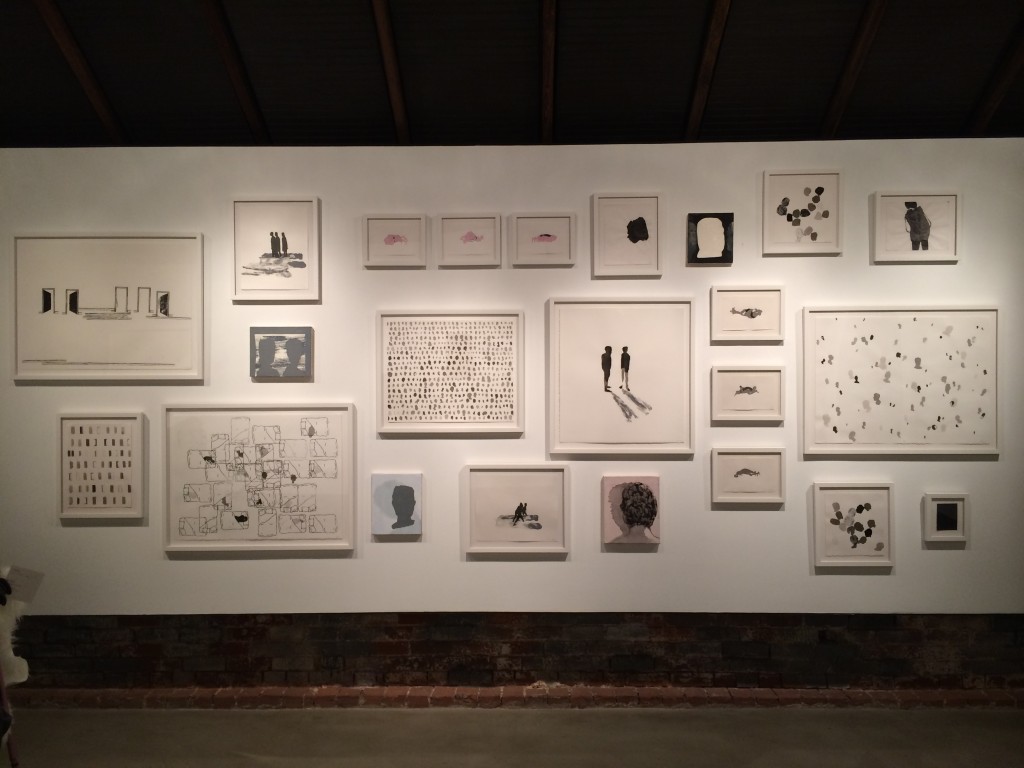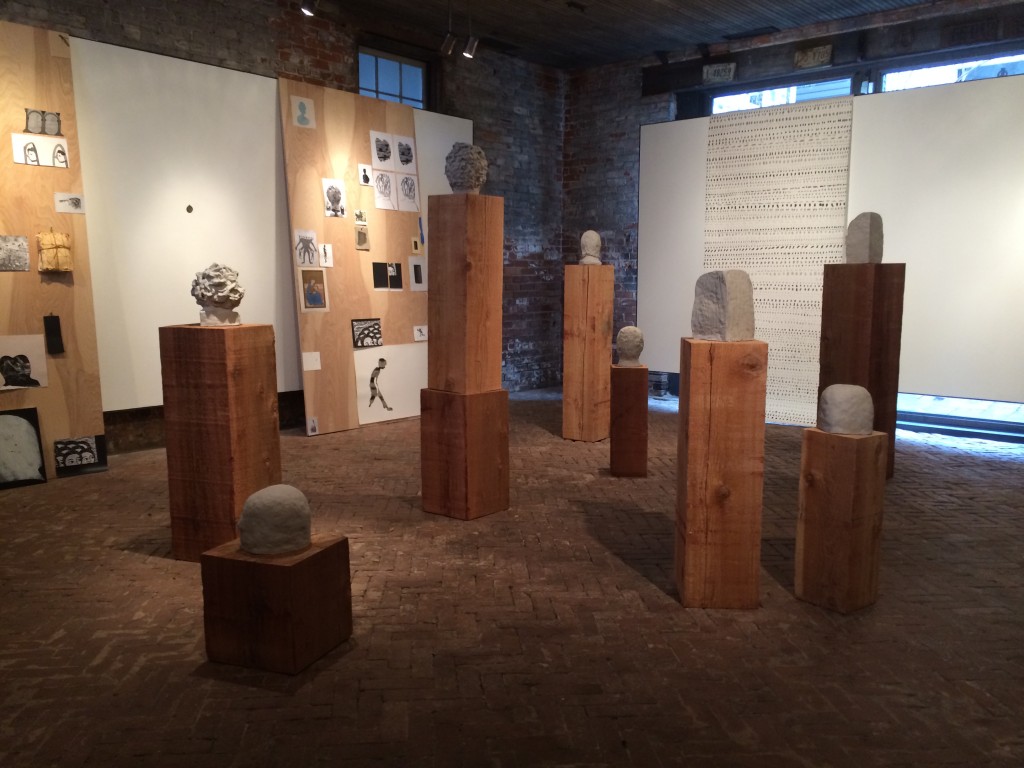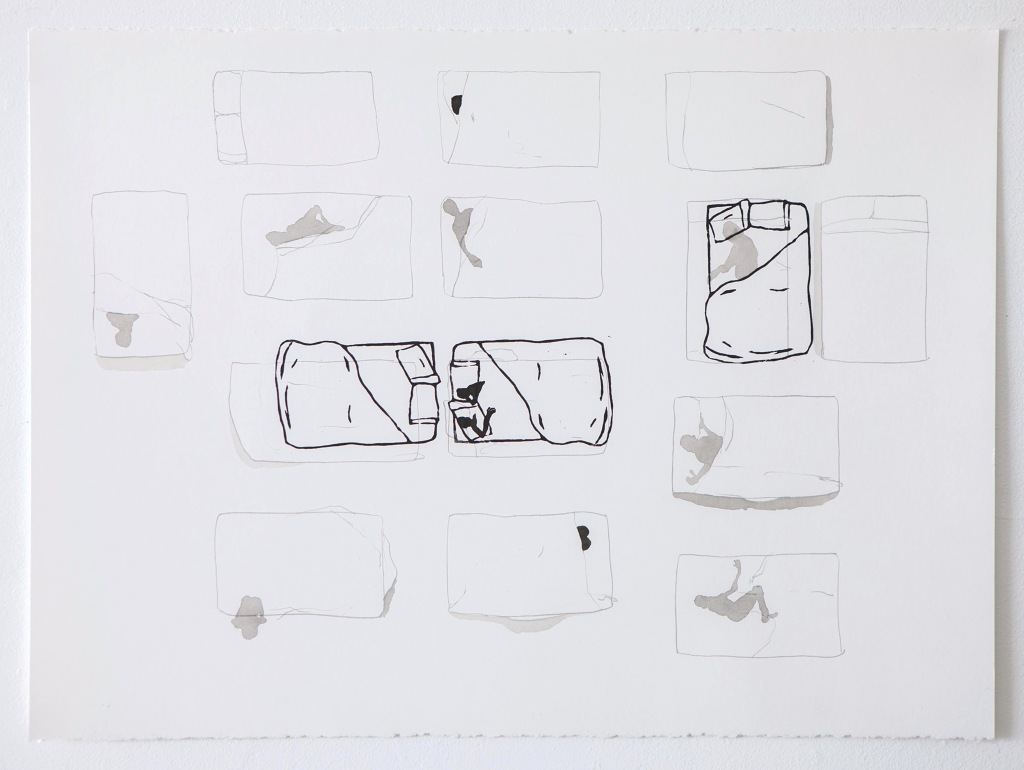 Using muted colors and swift ink strokes, artist Amy Pleasant brings every day mundane things to life in her work. Currently based in Birmingham, Ala., Pleasant received her MFA from the Tyler School of Art in Philadelphia and has shown her work in New York City, Birmingham and others. Her current show at Whitespace Gallery, re/form, explores the beauty of human gestures and behaviors and how they influence us. With subjects such as unmade beds and silhouettes in movement, her work highlights and shows an appreciation for the little things in life that we often miss.
Using muted colors and swift ink strokes, artist Amy Pleasant brings every day mundane things to life in her work. Currently based in Birmingham, Ala., Pleasant received her MFA from the Tyler School of Art in Philadelphia and has shown her work in New York City, Birmingham and others. Her current show at Whitespace Gallery, re/form, explores the beauty of human gestures and behaviors and how they influence us. With subjects such as unmade beds and silhouettes in movement, her work highlights and shows an appreciation for the little things in life that we often miss.
CommonCreativ talked to Pleasant about the little things in life, finding flow in your work and staying engaged as an artist.
CommonCreativ: How did you become an artist?
Amy Pleasant: My parents started my art lessons when I was very young and I was surrounded by art books my whole life. There was never a question of whether I would pursue it. My family is very creative. I have music mixed in on both sides, plus my dad is an artist (he didn’t pursue it as a career, but was always making it), [and I have] two uncles who were artists—one a painter and the other a photographer/videographer—so my interest was very nurtured and encouraged.
CC: Your pieces tend to convey a lot of emotion in a minimalist way. How’d you develop your artistic style?
AP: There is so much in a gesture. My interest in the figure—how it moves and what it reveals about a psychological state, to me—is incredibly powerful. We communicate with each other with the slightest of means. I have made small ink and brush drawings since I was in school, and it was the everyday practice that fed all the work. They were simple and direct. These have been at the core of my work ever since.
CC: How did you prepare for your Whitespace show?
AP: I am never really preparing for a show, but at the same time, I am always preparing for a show. I am always creating work, experimenting with new ideas and trying not to hold it too tightly or I feel the work gets stifled. I was already making a lot of the work in this show before I knew it would be at Whitespace. The sculptural pieces had been turning in my mind for about two years, and the body of work really took form about halfway through. That’s the way I like it. Once Susan [Bridges, the gallery owner and director] and I began to talk about a show, I saw her space in a whole new way. I started imagining the work in there and saw possibilities and challenges that thrilled me. Once that happened, the “show” started to take form, and it became an exhibition in my mind. Everything in the show had to be installed in a way that animated the space. They played together.
CC: You often capture seemingly menial or mundane moments in life—why is this important for you?
AP: Because this is the stuff that makes up most of our lives. I am interested in repetitive gesture. It is the “in-between,” when we are with ourselves and have time for reflection… it is when we are alone that we allow ourselves to be ourselves. It is how we live with each other on a daily basis. It is in our intimate relationships and our daily interactions with one another that we learn who we are, if we are willing to pay attention.
CC: What inspires you?
AP: My friends who are great artists and working hard all the time; my family; when I see something that I am doing fresh again.
CC: How do you promote yourself as an independent artist?
AP: It’s something that you have to do every day. I have to make the work, and at the same time, stay engaged with what is going on around me. I try and stay visible through exhibitions, my website and by meeting people when I travel. I’m lucky that I have had a dealer, Jeff Bailey, that I have worked with since 2004, and now with Susan Bridges at Whitespace, who introduce the work to an audience outside of my own.
CC: What do you think about Atlanta’s arts scene?
AP: I love the energy in Atlanta. It’s very different than Birmingham in that there are so many exhibition spaces and opportunities for artists to show their work. We lack a support system in Birmingham like artist grants or subsidized studio spaces. Atlanta has several sizable artist grants to support and encourage the making of new work, for example, and then you have spaces like the Atlanta Contemporary Art Center, where you have artist studios in a place where great exhibitions and lectures happen on a regular basis. There is a large creative community,and with that comes driven, inspired people who make things happen.
Don’t miss Amy Pleasant’s show, re / form, at Whitespace Gallery until Feb. 15, and see more of her work here.
Featured image via (c) Jason Wallis Photography








